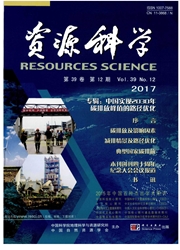

 中文摘要:
中文摘要:
近年来,中国土地财政问题引发的土地资源不合理利用已受到较多关注。探究央地政府间土地收入分配与耕地资源流失的相互作用机制,能为进一步完善土地财政政策提供决策建议。本文在梳理中国20世纪80年代起耕地占用税和国有土地有偿出让收入央地分成政策的基础上,利用协整检验、VEC模型和Granger因果检验等方法分析央地分成比例变化与建设占用耕地面积的时间序列数据。结果表明,耕地占用税与国有土地有偿出让收入的央地分成比例在1987-1999年间变动频繁。耕地占用税及国有土地有偿出让收入分成变化与建设占用耕地之间存在长期协整关系,并且存在从分成变化到建设占用耕地面积变化的单向因果关系。这说明建设占用耕地面积的增减是对央地分成变化的主动响应,而土地出让收入分配的调整受到了政府行为等复杂因素的影响。土地出让相关收入分配比例的有效调节会对耕地资源的保护产生积极的作用,为遏制耕地资源非农化可针对不同类型土地收入制定适宜的分配主体和分配比例,避免多种土地出让收入征收的叠加失效和土地资源的浪费错配。
 英文摘要:
英文摘要:
Recently, irrational use of land resource caused by land financial problems has drawn academic attention in China. Exploring the interaction between the change of revenue sharing policy for land conveyance and arable land loss, will provide suggestions for perfecting land financial policies. We reviewed the history of sharing schemes for farmland occupancy tax and state-owned land leasing revenue between the central government and local government since the 1980s. Then we analyzed time series data for the sharing proportion for these two types of land conveyancing related to revenue and arable land occupied for construction. Unit root test, co- integration test, vector error correction model and granger causality tests were used. Results show that the sharing proportion of farmland occupancy tax and state-owned land leasing revenue changed frequently from 1987 to 1999. A long term co-integration relationship exists between the revenue sharing proportion for land conveyance and arable land occupied for construction. We found single direction causality from the change in the revenue sharing proportion to change in arable land occupied for construction, revealing that increases and decreases in the arable land occupied by construction respond to changes in the revenue sharing proportion. The adjustment of revenue sharing schemes for land conveyancing was influenced by several complicated reasons, such as local government behaviors. Therefore, effective and powerful adjustment of revenue sharing schemes for land conveyancing play an important role in arable land protection. Government and land administrative departments could formulate proper sharing subjects and sharing proportions according to different types of land conveyance revenue to prevent high quality arable land conversion. At the same time, this move could effectively avoid failure under the overlay of many kinds of land revenue as well as waste of limited land resources.
 同期刊论文项目
同期刊论文项目
 同项目期刊论文
同项目期刊论文
 期刊信息
期刊信息
